Barcelona is a city of art, both in museums and in open public areas. The city’s culture is about freedom of expression and pride in its history, and there was a time when artists ruled the city and represented Spain in the best light possible. The passion and love that the artists put into public displays of their works represent the best of what an artist can do to share with others. Here are a few of the most famous public sculptures in Barcelona.
Related Article: Discover arts in the streets of Barcelona
Table of Contents
Golden Fish
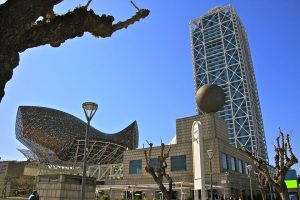


Photo via Pixabay
Frank Gehry, a Canadian-born American architect adds this work to his extended portfolio of public sculptures and buildings he has drawn up in his remarkable career as an architect. He is responsible for many other impressive buildings and sculptures around the world, and his Guggenheim Museum in Bilbao is considered one of the greatest architectural feats in recent history. The Golden Fish sculpture was constructed as part of the city’s facelift for the 1992 Olympics and is located along the Port Olímpic waterfront, naturally, by the Hotel Arts and the Mapfre tower. It measures 35 x 54 meters and is made from stone, steel, and glass. It’s a contemporary construction with its precious space representing the newer Barcelona.
El Cap de Barcelona
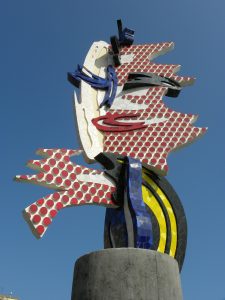


Photo via Pixabay
The American pop artist Roy Lichtenstein designed a colorful and vivid representation of a woman’s head in the traditional pop art style. This sculpture was also made for the Olympics in 1992 when Lichtenstein came up with the standing piece of street art from the work of Gaudí. Lichtenstein followed up Gaudí’s noted procedure of smashing up tiles and putting them together in various forms, contributing to its surrealist look. This was Lichtenstein’s first exterior ceramic tile sculpture and arguably his best 3D work. At 64 feet high, the “head” stands at the end of Passeig Colom in front of the post office. With her red lips, thick eyelashes, and yellow, blue, and black “neck,” she’s a true representation of Barcelona’s rebirth in a new era of life and standing in the entire world.
Dona i Ocell
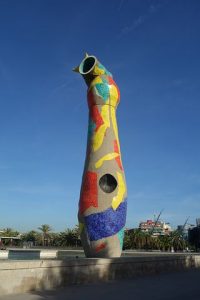


Photo via Pixabay
Spain’s Joan Miro constructed this sculpture just before his death as a blessing to a new Barcelona, fresh from years of dictatorship. His extensive work in various art genres has long been recognized as among the most appreciated in the 20th-century, right next to his fellow Spanish artists, Picasso and Dalí. Standing in a shallow pond, the “Woman and Bird” stands at 72 feet tall behind the Las Arenas Shopping Centre in Plaça Espanya, welcoming visitors to the city. Up close, people can note the different colors intersecting with one another all the way to the top where a union of life and death is represented in the form of a woman and bird. On a side note, the Catalan word ocell is also a nickname for a man’s penis, reflecting its phallic nature. It’s a provocative piece that could be interpreted as an act of breaking free from the old dictatorial regime and moving towards a society with freedom of sexual expression.
Related article: Sand sculptures in Barcelona
El Gat del Raval
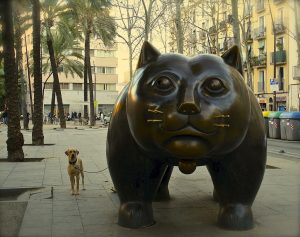


Photo by LARS77722 via Visualhunt
The Raval Cat, as it is translated, was done by Columbian artist Fernando Botero. First arriving in 1987, the sculpture was twice moved before settling into El Raval; for some reason, it was too risque for sitting in front of the zoo. But moving it here in 2003 symbolizes the radical change of the neighborhood from a scene of crime and prostitution to a trendy living and working area which is quickly becoming an attraction in Barcelona. Many people who pass by like to stop and take a selfie with the cat and its long, fat body. Botero is known for creating his figures exaggerated in size, being part humorous and part critical. El Gat del Raval is not the only Botero sculpture in Spain, let alone Barcelona; look for Motherhood in Oviedo and Caballo con Bridas in Bilbao.
Barcelona’s art is a big tent of influence that lives on today. It’s a city proud to awe and shock the public in different ways, including its sculptures. Placing the new within the old has always challenged the old standing of what art should be, and continues to defy the traditional ideas of what is appropriate to display in open public areas. These are just a few pieces that define Barcelona’s cultural liberation.
Looking for an apartment in the city? ShBarcelona is the answer.









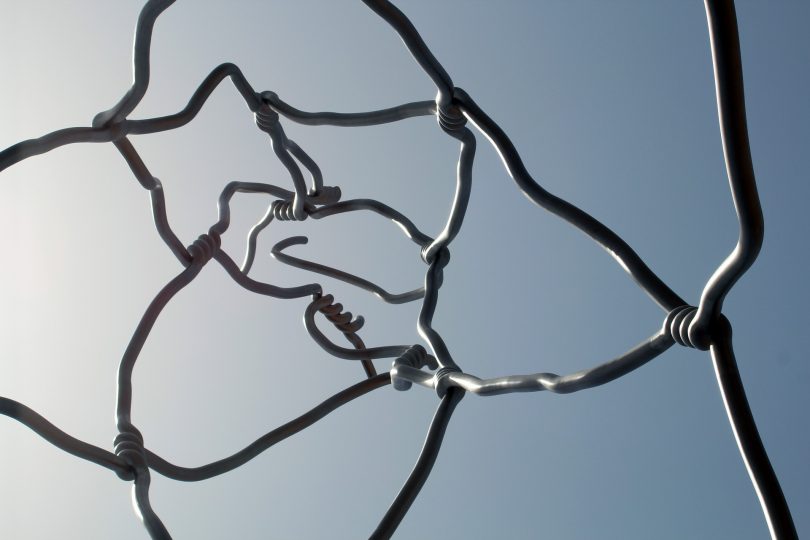

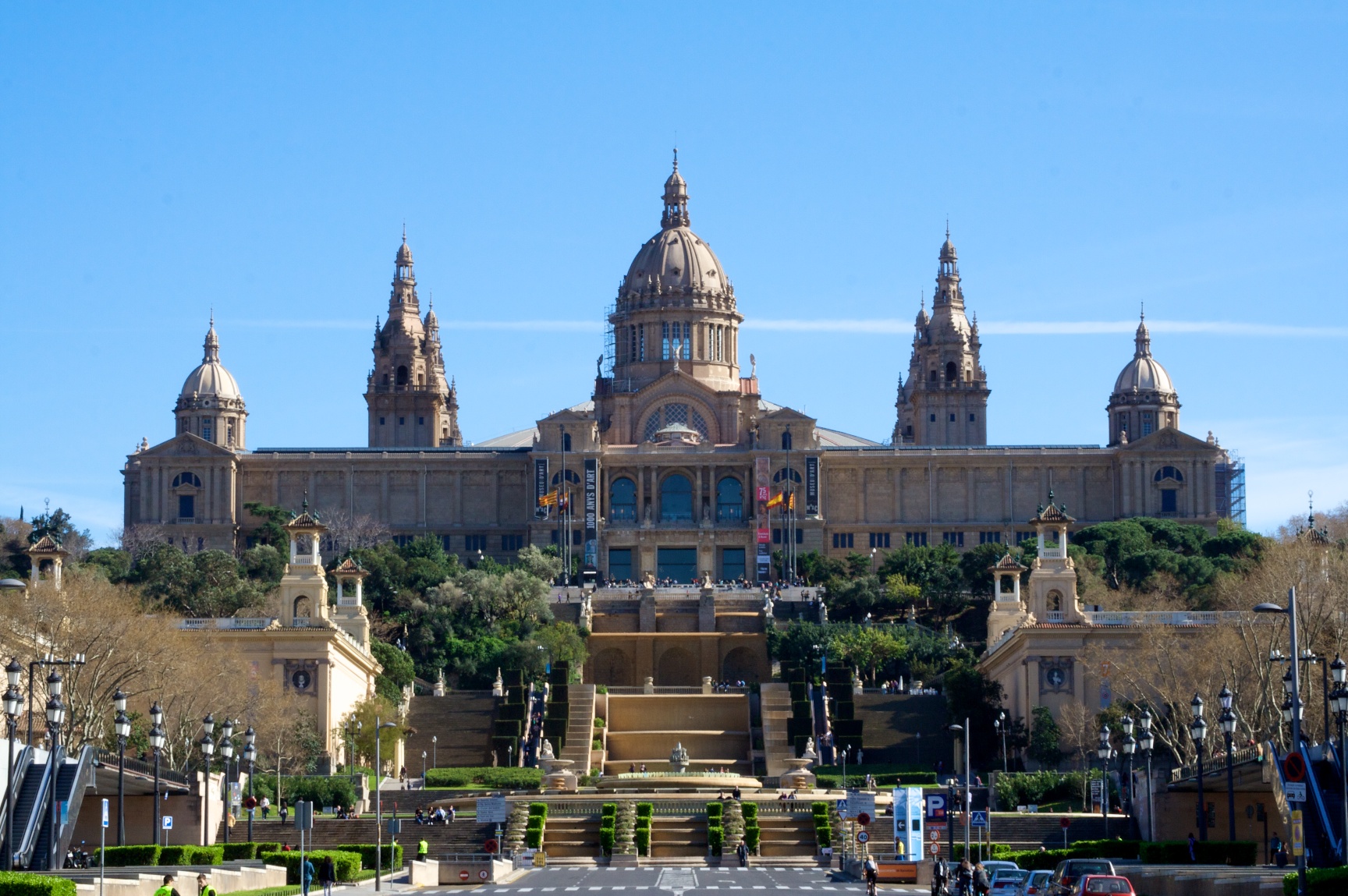
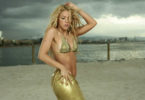
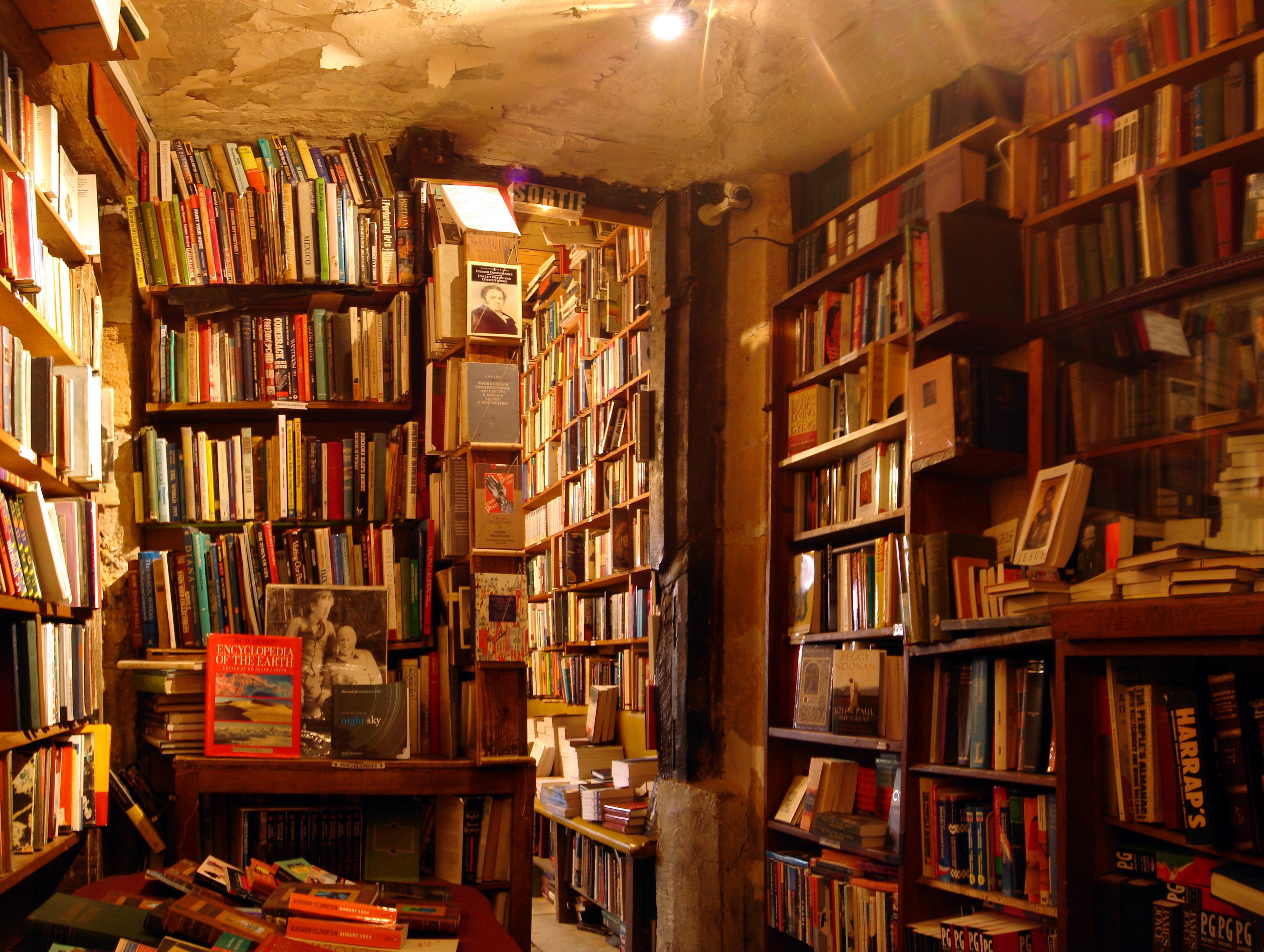

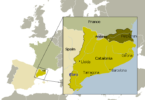
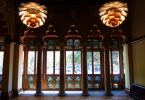
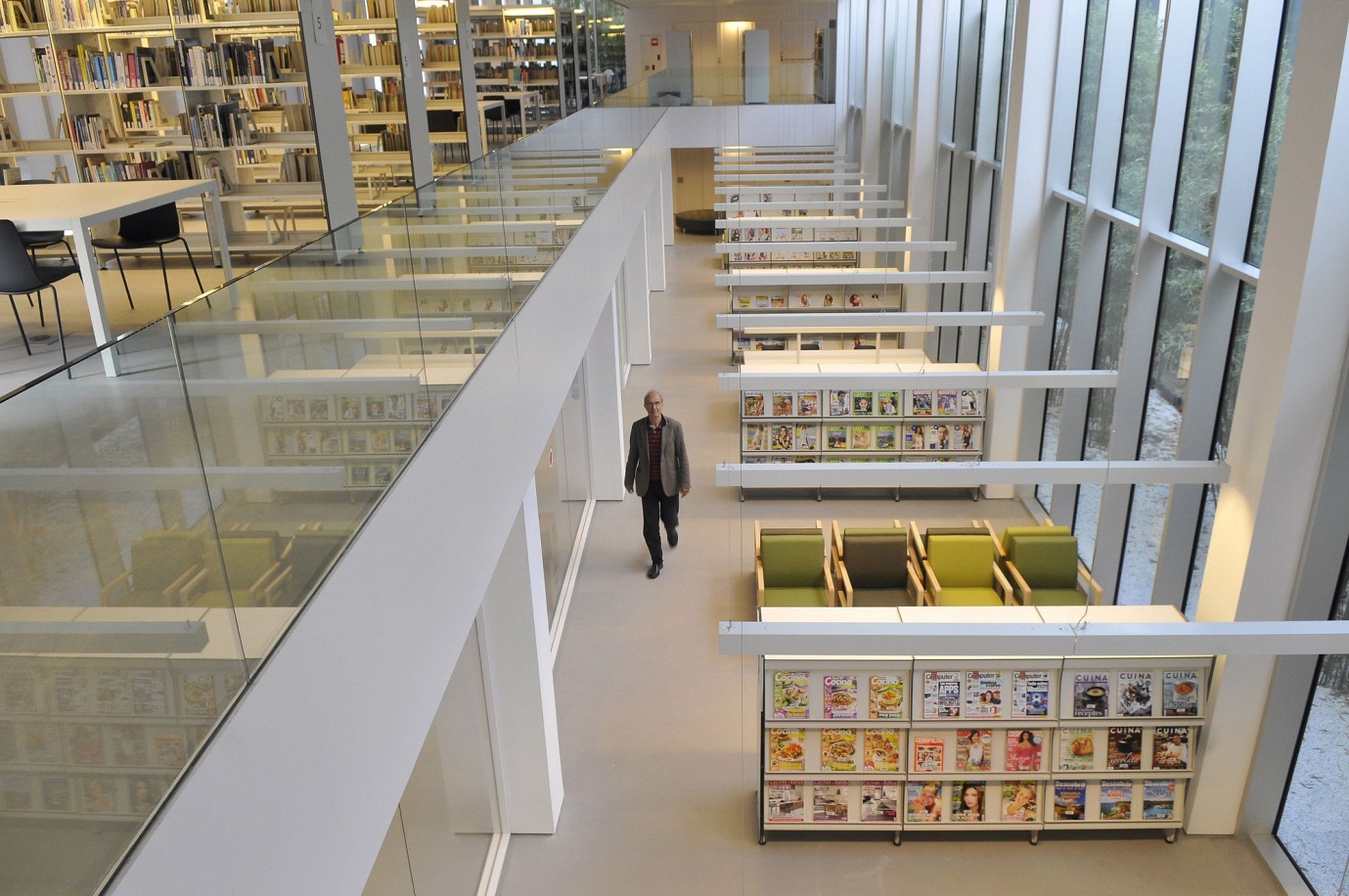
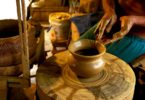
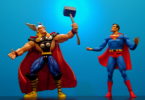

Leave a Comment